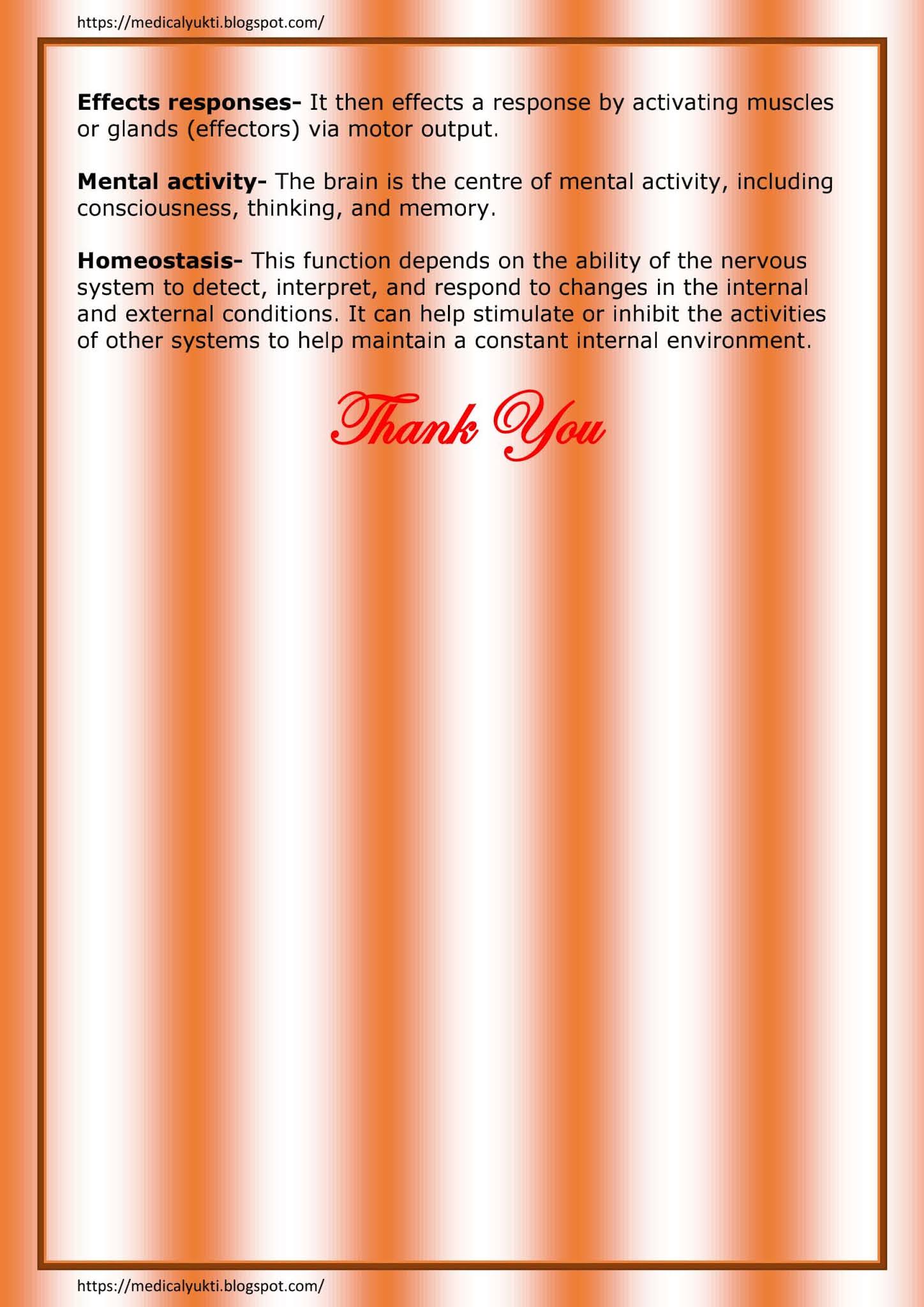The nervous system is the master controlling and communicating system of the body. Every thought, action, and emotion reflects its activity. Its signaling device, or means of communicating with body cells, is electrical impulses, which are rapid and specific and cause almost immediate responses. The nervous system is made up of the central nervous system and the peripheral nervous system.
The central nervous system (CNS) is made up of the brain and spinal cord. The brain controls most body functions, including awareness, movements, sensations, thoughts, speech and memory. The spinal cord is connected to the brain at the brain-stem and is covered by the vertebrae of the spine. Nerves exit the spinal cord to both sides of the body. The spinal cord carries signals back and forth between the brain and the nerves in the rest of the body.
The peripheral nervous system (PNS) is the part of the nervous system outside of the CNS. It is made up of nerves that send signals to and receive signals from the CNS. The PNS is divided into the somatic nervous system and the autonomic nervous system. The somatic nervous system controls body movements that are under our control such as walking. The autonomic nervous system controls involuntary functions that the body does on its own such as breathing and digestion.
The autonomic nervous system(ANS) is further divided into the sympathetic and the parasympathetic nervous systems. Nerves of the sympathetic nervous system prepare the body for situations that require strength and heightened awareness or situations that arouse fear, anger, excitement or embarrassment. This is called the fight-or-flight response.




























































0 Comments: